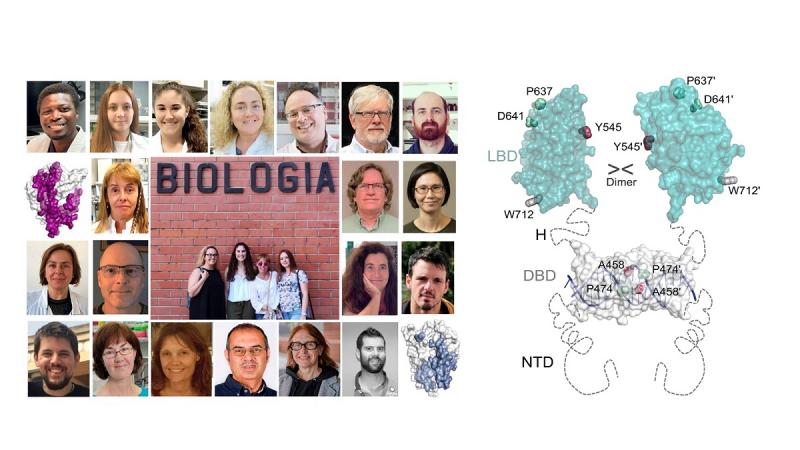The glucocorticoid receptor (GR) is a transcription factor that regulates essential life processes in human physiology, in response to steroid hormones, like cortisol, which are involved in inflammation processes and stress situations. Hence, GR is an important pharmacological target to treat inflammatory diseases and stress-related disorders. In this context, phenolic compounds in red wine, fruits and other components of Mediterranean diet are known to modulate GR function, which could contribute to explain their neuroprotection effects.
Now, a new study reveals for the first time that GR is a plastic protein with a highly versatile structure, capable of forming a large variety of homo-dimers and other oligomeric forms that are key for its function.
This work has been performed by a broad consortium of researchers from different national and international institutions, led by Prof. Eva Estébanez-Perpiñá, from the Institute of Biomedicine of the University of Barcelona (IBUB), and that includes the participation of Juan Fernández Recio, researcher from the Structural Bioinformatics group (3DBIOwine) at the Institute of Grapevine and Wine Sciences (ICVV).
The contribution of the ICVV research group has been essential for the energetic classification of the dimers observed in different crystallographic structures, as well as for the computational modeling of possible oligomeric forms. The application of structural bioinformatics techniques complemented existing experimental data and helped to understand essential functional aspects of these proteins.
The results of this study have been published in this article:
Jiménez-Panizo A, Alegre-Martí A, Tettey TT, Fettweis G, Abella M, Antón R, Johnson TA, Kim S, Schiltz RL, Núñez-Barrios I, Font-Díaz J, Caelles C, Valledor AF, Pérez P, Rojas AM, Fernández-Recio J, Presman DM, Hager GL, Fuentes-Prior P, Estébanez-Perpiñá E. The multivalency of the glucocorticoid receptor ligand-binding domain explains its manifold physiological activities. Nucleic Acids Res. 2022 Dec 5:gkac1119. doi: 10.1093/nar/gkac1119.
https://academic.oup.com/nar/advance-article/doi/10.1093/nar/gkac1119/6858817








